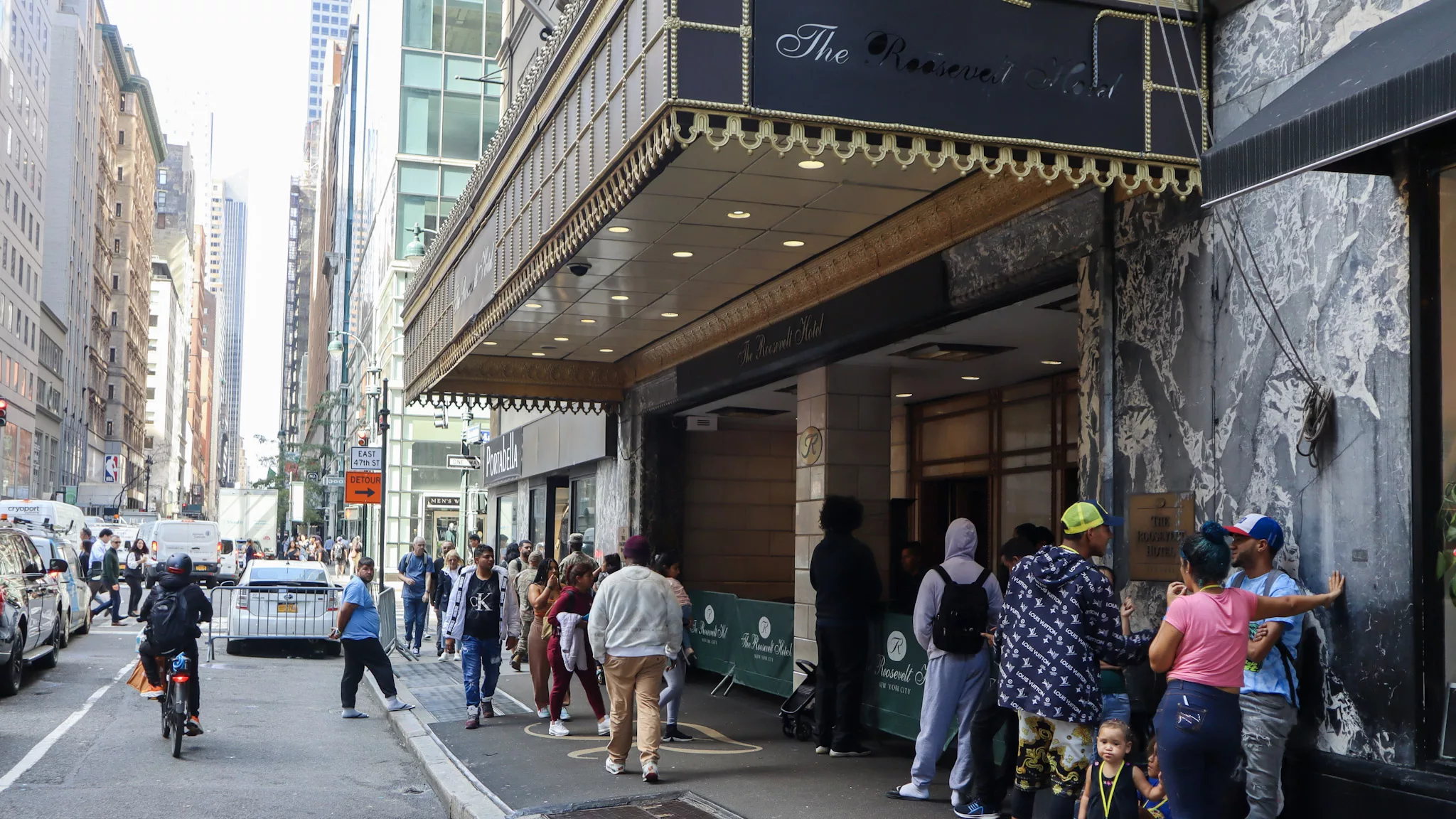At a city council oversight hearing on Monday regarding Mayor Eric Adams administration’s November financial plan, the mayor’s budget director said that they are planning on reducing migrant-related costs by 20%. This will include cutting down the length of shelter stays and finding ways to stop opening new sites.
Jacques Jiha, the director of the Mayor’s Office of Management and Budget, doubled down on the claim that the city’s response to newly arrived migrants is the cause of the city’s deficit.
“Without the substantial migrant related spending, the fiscal year 2025 gap would have been manageable and within historic norms,” he said.
Also Read: Officials Reject Mayor Adams’ $10B Cuts to NYC Budget as Part of Migrant Solution
His comments drew pushback from several council members in attendance.
“It is inaccurate, and careless, and sometimes dangerous to infer that our current financial circumstances are solely the result of increased costs from the asylum seeker response,” Justin Brannan, the chair of the council’s Committee on Finance, said. “Costs related to the migrant influx are an additional hurdle, but we wouldn’t be seeing gaps like this today if that was the only challenge on our plate.”
Jiha said that more than 150,000 migrants have gone through the city’s care, and more than 67,000 are currently still in city facilities. Given the billions the city expects to allocate toward asylum seeker costs, the budget gap for fiscal year 2025 has grown 40% to $7.1 billion. The city projects that it will spend more than $12.25 billion in services related to asylum seekers from fiscal year 2023 through fiscal year 2025, Jiha said.
Because of these increased gaps, the Mayor announced in September a Program to Eliminate the Gap (PEG) that required agencies to reduce city-funded spending by 5%, Jiha said. Employees were not laid off, though Jiha acknowledged some city operations were impacted. In the upcoming preliminary budget, the city will implement another 5% PEG on city spending.The fire department, the sanitation department and the police department will be exempted.
“I want to be very clear that the road ahead will be difficult. We simply cannot rely exclusively on PEGs to fund asylum seekers’ expenses. It is not sustainable,” he said. “If we are not able to substantially reduce the migrant census, we face very difficult and grim decisions around how to fund this national humanitarian crisis.”
Meanwhile, city council members challenged the administration’s assertion that asylum seeker funding was the primary contributor to these budget gaps.
“Many factors are contributing to the gaps in our city’s outyear budgets, and asylum seekers are not to blame,” New York City Council Speaker Adrienne Adams said in her opening remarks.
Adams instead called the expiration of Covid-19 federal stimulus funds, the slowing of New York’s economic growth, and the city’s real estate challenges, among other factors, as the “underlying drivers” of the city’s budget gaps.
Brannan said that while shouldering the financial weight of an international migrant crisis is “far too high a burden” for a local government to bear, the council “sounded warnings” multiple times about the funding of city services with Covid-19 relief funds that were only temporary. The council made clear, Brannan said, that the city should find other sources of funding.
Jiha told Brannan that the city has received about $1.9 billion from New York state, and approximately $156 million from the federal government, to handle the humanitarian crisis. The city, Jiha said, was not getting “adequate” financial assistance from the federal government.
Several council members questioned why the city decided to award contracts to costly for-profit companies, instead of community based organizations and nonprofits. The city would be contracting with more nonprofits moving forward, Jiha said, but said many had physical capacity and financial limitations to deal with the humanitarian crisis.
Council member Gale Brewer, who represents District 6 on the Upper West Side, began her questioning by immediately responding to Jiha’s claims about nonprofits. “I do not agree,” Brewer said. “I want to know why so many of these awards were given to for-profit companies.”
Throughout the hearing, Jiha referenced the city’s new system, which requires asylum seekers in some shelters to leave the facility within 30 or 60 days after receiving a notification, was having a “positive” result so far, from the budget office’s perspective.
Also Read: Analysis: Breaking Down Mayor Adams’ 15 Percent Budget Cuts
Responding to questions from Speaker Adams, Jiha said that in a sample of 60-day notices that the city gave out to migrants, only about 16% of migrants returned to city care after leaving the city’s facilities. The city was working on strategies to bring down the number of migrants in city care, Jiha said, including “using different policies to see what works, to get as many people out of the system as quickly as possible.”
“If we don’t bring down the [migrant] census,” Jiha said, “we’re going to have to make some difficult decisions as a city.”















